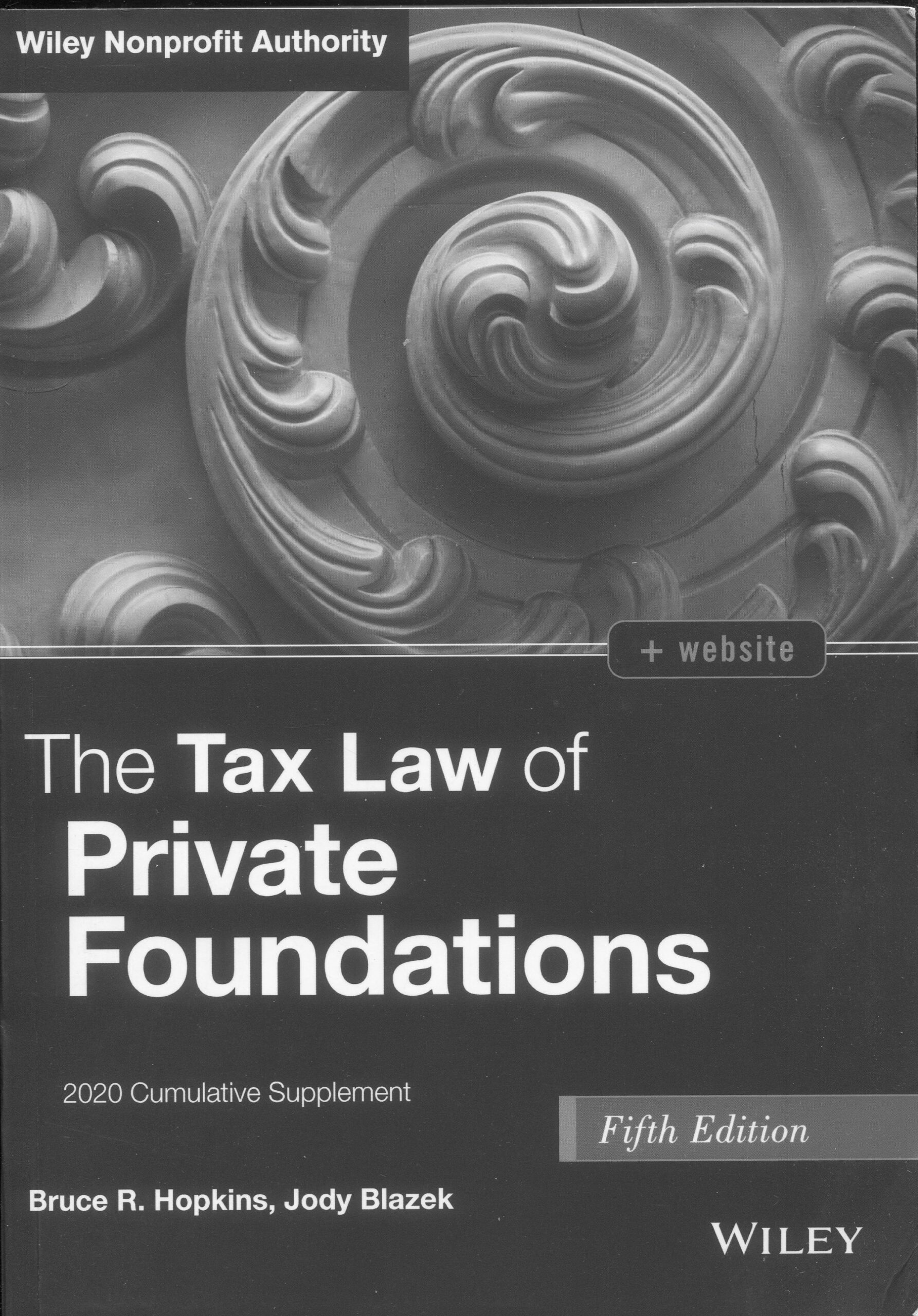Preface ix
Book Citations xi
1 Introduction to Private Foundations 1
§ 1.1 Private Foundations: Unique Organizations 1
§ 1.2 Definition of Private Foundation 1
§ 1.7 Operating for Charitable Purposes 1
§ 1.9 Private Foundation Sanctions 2
§ 1.10 Statistical Profile 9
2 Starting, Funding, and Governing a Private Foundation 11
§ 2.1 Choice of Organizational Form 11
§ 2.5 Acquiring Recognition of Tax-Exempt Status 11
§ 2.6 Special Requirements for Charitable Organizations 12
§ 2.7 When to Report Back to the IRS 12
3 Types of Private Foundations 15
§ 3.1 Private Operating Foundations 15
§ 3.3 Conduit Foundations 16
§ 3.9 Foreign Private Foundations 16
4 Disqualified Persons 17
§ 4.1 Substantial Contributors 17
§ 4.2 Foundation Managers 17
§ 4.3 Certain 20 Percent Owners 17
§ 4.4 Family Members 18
5 Self-Dealing 19
§ 5.1 Private Inurement Doctrine 19
§ 5.2 Private Benefit Doctrine 20
§ 5.3 Definition of Self-Dealing 22
§ 5.3A Excess Compensation Tax 23
§ 5.4 Sale, Exchange, Lease, or Furnishing of Property 28
§ 5.5 Loans and Other Extensions of Credit 29
§ 5.6 Payment of Compensation 30
§ 5.8 Uses of Income or Assets by Disqualified Persons 30
§ 5.11 Indirect Self-Dealing 32
§ 5.12 Property Held by Fiduciaries 40
§ 5.14 Additional Exceptions 48
§ 5.15 Issues Once Self-Dealing Occurs 48
6 Mandatory Distributions 55
§ 6.1 Distribution Requirements—in General 55
§ 6.2 Assets Used to Calculate Minimum Investment Return 55
§ 6.5 Qualifying Distributions 56
7 Excess Business Holdings 57
§ 7.1 General Rules 57
§ 7.2 Permitted and Excess Holdings 59
§ 7.3 Functionally Related Businesses 60
8 Jeopardizing Investments 61
§ 8.2 Prudent Investments 61
§ 8.3 Program-Related Investments 61
9 Taxable Expenditures 63
§ 9.1 Legislative Activities 63
§ 9.2 Political Campaign Activities 64
§ 9.3 Grants to Individuals 64
§ 9.5A Funding of Employee Hardship Programs 67
§ 9.6 Grants to Foreign Organizations 73
§ 9.9 Spending for Noncharitable Purposes 73
§ 9.10A Distributions to Group Exemption Organizations 74
§ 9.11 Excise Tax for Taxable Expenditures 76
10 Tax on Investment Income 77
§ 10.1 Rate of Tax 77
§ 10.3 Formula for Taxable Income 77
§ 10.5 Foreign Foundations 78
11 Unrelated Business Activity 79
§ 11.2 Exceptions 79
§ 11.3 Rules Specifically Applicable to Private Foundations 80
§ 11.4 Unrelated Debt-Financed Income Rules 80
§ 11.5 Calculating and Reporting the Tax 81
12 Tax Compliance and Administrative Issues 89
13 Termination of Foundation Status 91
§ 13.1 Voluntary Termination 91
§ 13.3 Transfer of Assets to a Public Charity 91
§ 13.4 Operation as a Public Charity 91
§ 13.6 Termination Tax 91
14 Charitable Giving Rules 93
§ 14.1 Concept of Gift 93
§ 14.2 Basic Rules 94
§ 14.4 Deductibility of Gifts to Foundations 94
§ 14.5 Qualified Appreciated Stock Rule 94
§ 14.9 Administrative Considerations 95
15 Private Foundations and Public Charities 101
§ 15.2 Evolution of Law of Private Foundations 101
§ 15.3 Organizations with Inherently Public Activity 101
§ 15.4 Publicly Supported Organizations—Donative Entities 103
§ 15.5 Service Provider Organizations 104
§ 15.7 Supporting Organizations 106
§ 15.8 Change of Public Charity Category 106
§ 15.9 Noncharitable Supported Organizations 108
16 Donor-Advised Funds 109
§ 16.1 Basic Definitions 109
§ 16.3 Types of Donor Funds 109
§ 16.9 Statutory Criteria 109
§ 16.12 Tax Regulations 110
§ 16.13 DAF Statistical Portrait 110
§ 16.14 Criticisms and Commentary 112
17 Corporate Foundations 121
§ 17.3A Private Benefit Doctrine 121
§ 17.5 Self-Dealing Rules 122
§ 17.6 Other Private Foundations Rules 122
Table of Cases 123
Table of IRS Revenue Rulings and Revenue Procedures 129
Table of IRS Private Determinations Cited in Text 133
Table of IRS Private Letter Rulings, Technical Advice Memoranda, and General Counsel Memoranda 141
About the Author 157
About the Online Resources 159
Cumulative Index 161









